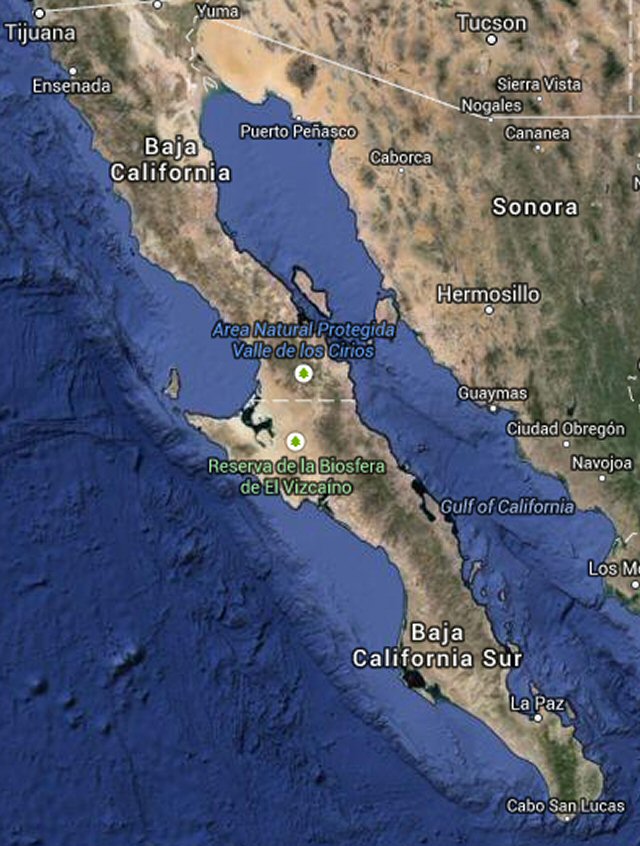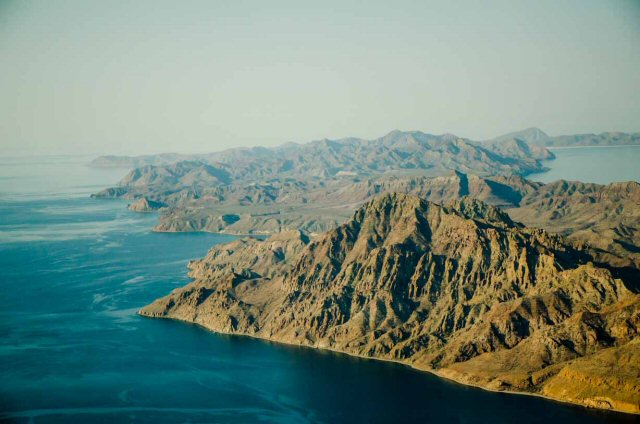Mexico
While the U.S. meets all the requirements to build a vast aquafacture-based economic infrastructure, Mexico also has comparable but less capital-demanding features with which to implement Plan A.
The Gulf of California –wholly Mexican- eliminates the need to dig a canal, and its two sparsely populated coastlines have abundant sunlight the year round.
There are mountainous islands, and the peninsula proper, over 1,000 miles long, also has a steep mountain range in the middle.
But what makes Mexico a leading candidate to become a global hydrogen producer is the need to balance its trade deficit with China, to create millions of well-paying jobs, and to replace the revenue it will lose when its oil reserves are gone. According to statistics from Mexico’s Department of Economy, in 2012 it exported $5.7 billion and imported almost $57 billion from China, a ten-fold imbalance that even the Chinese seek to redress. Accordingly, in April 2013 Pemex signed its first long-term contract to ship 30,000 barrels of oil a day to Sinopec, China’s state oil company, and Mexico’s administration has indicated that it will soon introduce legislation to allow greater international investment in its oil sector, currently a state monopoly. This is implicit recognition of the fact that Mexico needs foreign capital and expertise to search for and develop new oil and gas fields. But, should Mexico realize that hydrogen from electrolysis -a virtually unlimited resource- could be of great interest to nations whose domestic energy and/or water supplies are insufficient to meet domestic demand, it may consider developing it in earnest. One advantage Mexico has in the decision-making process over the U.S. is that it does not suffer from the same degree of gridlock.
Since the existing topographic features require little or no modification, and should the energy sector be opened to foreign investors, China and Japan, among others, would likely consider investing in the fuel of the future.

